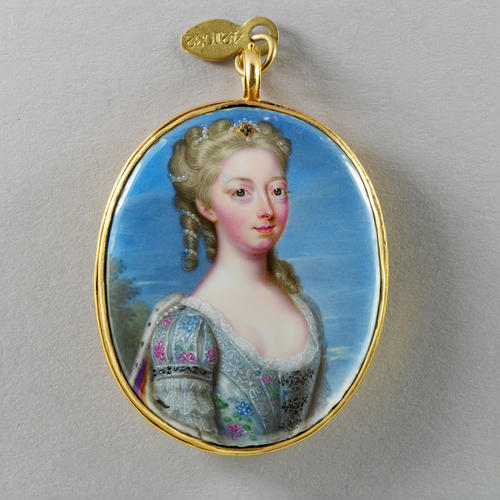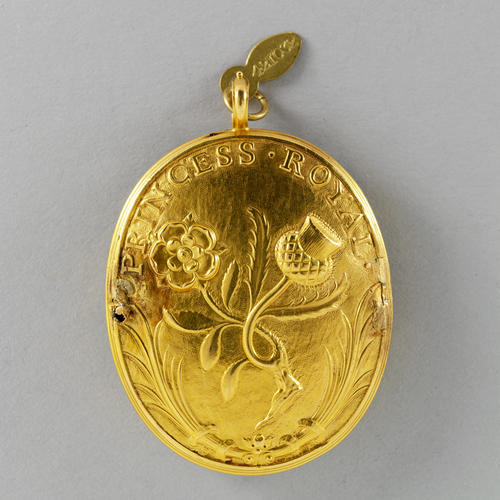-
1 of 253523 objects
Anne, Princess Royal (1709-1759) c.1730
Enamel | 4.6 x 3.8 cm (sight) (sight) | RCIN 421032

Christian Friedrich Zincke (1683/4-1767)
Anne, Princess Royal (1709-1759) c.1730

Christian Friedrich Zincke (1683/4-1767)
Anne, Princess Royal (1709-1759) c.1730


-
This miniature is a smaller version of another in the Royal Collection (RCIN 421797) and is of slightly higher quality.
Anne was born on 2 November 1709 in Hanover, the second child and eldest daughter of George Augustus, Electoral Prince of Hanover, later George II, and his wife, Caroline of Brandenburg-Ansbach. When her grandfather was proclaimed King George I of Great Britain and Ireland, Anne came to England with her mother and sisters, Amelia and Caroline, in September 1714. Contemporaries were impressed with her education; Mary, Countess Cowper, wrote that 'Princess Anne speaks, reads and writes German and French to Perfection, knows a great deal of History and Geography, speaks English very prettily and dances very well.' She later also learned Latin and Italian and was an accomplished musician. She married William IV, Prince of Orange-Nassau (1711–51) in 1734. When William died in 1751, Anne became Governor of the United Provinces and guardian of her son William V. She died in 1759 and was buried at the Nieuwe Kerk, Delft.
The artist, Christian Frederick Zincke (1683/4-1767), was born in Dresden, the son of a goldsmith. He settled in England in 1706 and studied enamel painting under Charles Boit. Boit was Enamel Painter to the Court until Queen Anne died in 1714 when he moved to France and Zincke took over much of his work. Zincke developed a thriving business, at first copying portraits by Sir Peter Lely and Sir Godfrey Kneller, then painting from life. He worked extensively for the royal family and, perhaps because he spoke German, was one of the few artists George II could tolerate. By 1730 he was well established at court and in February 1732, was appointed Cabinet Painter to Frederick, Prince of Wales, George II's eldest son. His eyesight began to fail, however, and he lamented: 'I find my Eyes scarce Capable of seeing them fine strokes'. By 1752 he had retired and only painted for his own pleasure. George II commented that Zincke's portraits were 'beautiful and like'.
The back of the locket is repoussé (hammered on the reverse side in order to create a decorative relief) with PRINCESS ROYAL above an entwined rose and thistle.Provenance
Acquired by Queen Mary
-
Creator(s)
-
Medium and techniques
Enamel
Measurements
4.6 x 3.8 cm (sight) (sight)
5.6 x 4.0 cm (frame, external)
Other number(s)
Alternative title(s)
Sophia Dorothea, later Queen of Prussia (1687-1757), previously identified as